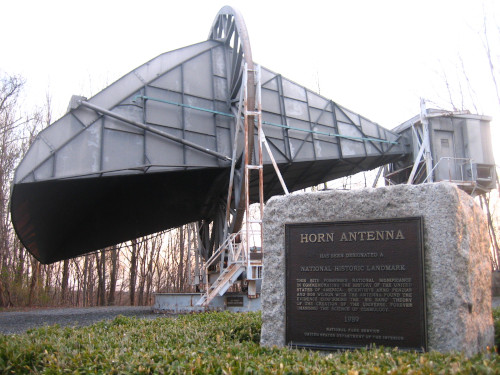Amateur radioastronomy in 4 GHz (I)
Hi, everyone! It’s been a while since my last blog post here. I couldn’t help it: I began a master’s degree in Astrophysics in the UCM last year, and a lot has been going on since then. In particular, I had an assignment for the subject Extragalactic Astrophysics, consisting on a scientific poster based on a freely chosen paper out of a list provided by the teacher.
One of the papers in the list was Measurement of the flux density of Cas A at 4080 Mc/s by Arno Penzias and Robert Wilson. This paper is particularly interesting for two reasons: first, this is the paper that led to the discovery of the Cosmic Microwave Background. Spoiler alert: they measured Cassiopeia A flux at 4 GHz successfully, being ~1 kJy, overestimaing its secular dimming to 1.1% per year. Second, it talks about radioastronomy in 4 GHz, and as we all know, radio is inherently fun.

Release of cccrack, the convolutional code cracker
On April 6th-7th 2019, the second edition of the STARcon 2019 congress took place in the ETSIT, in which I gave a talk about the state-of-the-art of reverse engineering of convolutional encoders, and provided a proof of concept of the ideas behind the work of Mélanie Marazin, Roland Gautier and Gilles Burel to guess the encoder polynomials of the Meteor MN2 LRPT signal.
More...Making an old VFD glow for the last time
Years ago (2008?), in the middle of an outburst of interest in electronics, I decided to dismantle my aunt’s old VHS recorder, a Sanyo VHR 7100EE, which she replaced by a generic uninteresting DVD player days earlier.
It was not the first time I disassembled a VCR. I did it multiple times in the past for minor repairments (like a worn out pinch roller that wrinkled the tapes), but back then I wanted to go a bit further. I extracted the main PCB, the head drum, the power supply and a couple of things more, being the 24-pin VFD display the only piece that remained with me until today.
 Testing the VFD after more than 10 years.
Testing the VFD after more than 10 years.VFD displays are particular cases of warm cathode vacuum tubes, in which (usually) 7-segment-shaped anodes are coted with a phosphorescent substance that light up when they are hit by an electron flow coming out of the heated filament due to thermionic emission (also called Edison effect).
More...CTS @ HardWear.io 2020 - Write-up (II)
(This post is a continuation of CTS @ HardWear.io 2020 - Write-up (I))
Signal 4 (150)
According to the previous challenge’s flag, frequency was 514 MHz and syncword 0x4F. The description of the challenge was as follows:
I guess you’re really into RF hacking if you’ve gotten this far!
I don’t need to tell you what to do to get to the next signal ;-)
Once you decoded that, enter the flag here!
Tuning to the referred signal produced a 192 ksps sample stream, with a train of bursty signals:
More...CTS @ HardWear.io 2020 - Write-up (I)
It’s been a while since the last time I participated in any kind of CTF, but recently a new radio hacking-related contest came up and I couldn’t help it but participate with the Spanish team ID-10-T. Yep, I’m that basic. According to the organizers, Capture The Signal (CTS) was a new challenge-based CTF that focuses exclusively on the reverse engineering of radio signals, organized by renowned community radio-hackers for researchers, hackers, and practitioners in the field. The interesting aspect of this contest was that it could be performed remotely, using a set of tools provided by the organizers to download the I/Q samples (standard little endian 32-bit IEEE 754 float) direcly from the contest servers by means of the message-passing library ZeroMQ. Due to this particular setup, in which multiple participants had to have access to the signals in the same server, frequencies were mapped to ports. Therefore, tuning to a signal will be a synonym for connecting to a ZeroMQ port. Using ZeroMQ for remote signal access was not arbitrary: GnuRadio offers native ZeroMQ support with its RF Over IP module, and the organizers themselves insisted that the whole CTS could be performed using the legacy GnuRadio 3.7, although other tools could be used too (at least in the simplest challenges).
More...